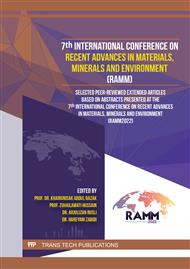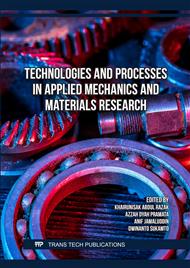p.27
p.35
p.41
p.49
p.59
p.65
p.75
p.85
p.95
Investigating the Impact of Short Burden and Spacing on Blasting Output in Zeberced Quarry
Abstract:
Blasting has been adjudged as the cheapest method of hard rock fragmentation. The itinerary of rock breakage through blasting in open pit mines is a complex portent which is measured via various variables and parameters. This research investigates the impact of short burden and spacing on blasting output with the aim of establishing a more suitable and economically viable approach. Trials and proposed methods were adopted to investigate blasting geometry results. Results obtained showed that the trials method of 1.2 m by 1.2 m and proposed blasts method of 2.0 m by 2.0 m burden and spacing at 9m depth, covered areas were 80.64 m2 and 99.36 m2 respectively, while at 12 m depth with same blasting geometry covered 224 m2 and 276 m2 respectively. The first trial and proposed blasts methods using burden and spacing of 1.2 m by 1.2 m produced 2,583.71 tons and 2,387.62 tons respectively. Hence, with the use of 2.0 m by 2.0 m burden and spacing, the blasts operations produced 7,176.96 tons and 6,632.28 tons respectively. Meanwhile, the results revealed that, short burden (≤ 1.2 m by 1.2 m) threatens safety in which flyrocks are spawned and it’s dangerous to equipment and personnel, at the same time, the areas covered, quantity produced (i.e. volume) and the tonnage were small compared to the engineering control methods. However, it was found that the trials blast methods were not economically worthwhile in terms of explosive consumption compared to the proposed measure of the geometry.
Info:
Periodical:
Pages:
59-64
Citation:
Online since:
January 2024
Price:
Сopyright:
© 2024 Trans Tech Publications Ltd. All Rights Reserved
Share:
Citation:



